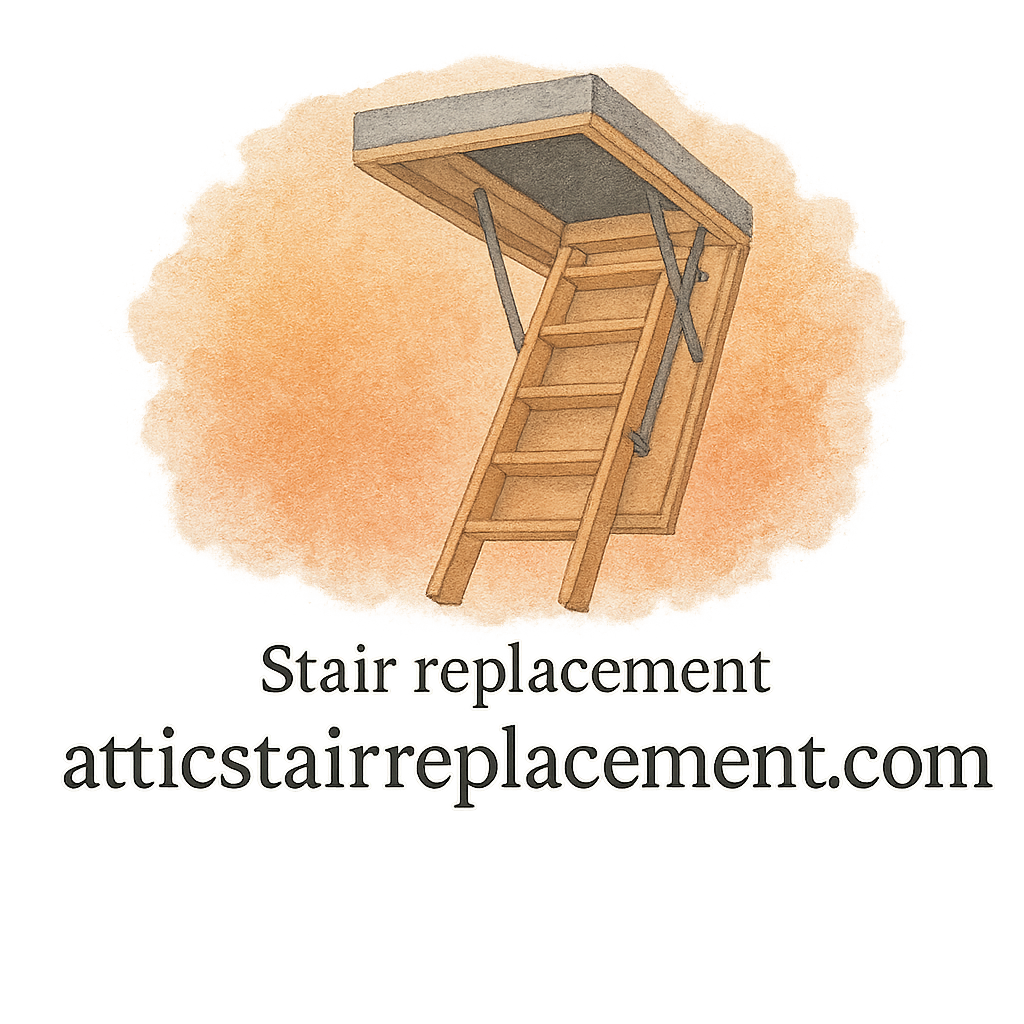Let’s face it — attic stairs are one of those “out of sight, out of mind” parts of the home. But when they break? It’s a huge headache. Repairs can be costly, and a full replacement? Even worse. That’s why we’re diving into 8 preventative tips to avoid attic stair replacement — simple steps that can save you serious time, money, and frustration.
Want your attic stairs to last? Read on.
Why Preventative Maintenance Matters
The Cost of Attic Stair Replacement
Replacing attic stairs isn’t just a DIY Saturday project — it often involves removing trim, cutting drywall, and navigating tight attic spaces. On average, it can cost $300 to $900 or more, depending on the materials and whether you hire a professional.
Explore your replacement options here: Attic Stair Replacement
Benefits of Prevention Over Replacement
Preventative care doesn’t just prolong the life of your attic ladder; it also keeps your home safer, your budget healthier, and your to-do list shorter. Prevention is cheaper, faster, and smarter.
Tip 1: Perform Regular Visual Inspections
The easiest way to avoid attic stair disasters? Just look.
What to Look For During Inspections
Inspect your attic stairs every couple of months for:
- Cracks in wood or metal
- Warping
- Loose or rusted hinges
- Squeaking or uneven movements
Be proactive. Spot issues early before they escalate.
How Often Should You Check?
Aim to inspect every 2 to 3 months, especially if the stairs get frequent use. It’s part of basic maintenance and care.
Tip 2: Lubricate Moving Parts Regularly
Those creaky sounds aren’t just annoying — they’re red flags.
Best Lubricants for Attic Stairs
Use a silicone-based spray or lithium grease to keep hinges, springs, and tracks smooth. Apply every 3–6 months for optimal performance.
Want more DIY upkeep tips? Check out DIY Installation & Maintenance.
Tip 3: Tighten Loose Screws and Bolts
A loose screw today is a broken stair tomorrow.
The Danger of Ignoring Hardware
Loose fasteners compromise the entire structure. If left unchecked, it can cause the entire frame to sag or collapse — leading straight to attic stair replacement.
Use a screwdriver and wrench to regularly check all joints and attachments. Tighten anything that wobbles.

Tip 4: Avoid Overloading the Stairs
You wouldn’t drive a sedan like a pickup truck, right? Same logic applies here.
Know Your Stair’s Weight Capacity
Most attic ladders are built to hold 250–375 lbs. Piling on boxes, tools, or climbing with someone else? Recipe for disaster.
Check the manufacturer label and stay well within the weight limits. When in doubt, check out our product reviews for stronger options.
Tip 5: Control Moisture and Humidity
Moisture is the silent killer of attic stairs.
Moisture Damage and Rust Issues
Whether your ladder is wood or metal, moisture can:
- Cause wood rot
- Promote rust on metal components
- Make stairs slippery and unsafe
Install a dehumidifier or proper ventilation system, especially in humid climates. It’s a key home improvement trick with big impact.
Tip 6: Keep the Ladder Clean and Debris-Free
Dirt might not seem dangerous, but trust me, it builds up.
How Dirt Affects Performance
Debris in the tracks and hinges can make the mechanism harder to open and close. Worse, it can trap moisture or accelerate rust.
Wipe the stairs down with a damp cloth and vacuum debris monthly.
Need more attic tips? Visit our attic maintenance tag.
Tip 7: Repair Minor Damages Immediately
Small cracks or squeaks are more than just annoyances — they’re warnings.
Small Problems Can Become Big Ones
A tiny crack in a wooden step can grow and cause sudden failure. Catch it early, and a $10 repair can prevent a $500 replacement.
For common repair scenarios, explore maintenance & repair advice.
Tip 8: Install with Quality and Care
It all starts at the beginning.
DIY or Contractor: Make the Right Call
If your attic stairs weren’t installed correctly the first time, you’re already on borrowed time. Whether you’re a DIYer or hiring a contractor, make sure the job is done right.
Use our DIY installation guide or search for a qualified contractor near you.
Common Mistakes That Lead to Replacement
Even with the best intentions, many homeowners make these mistakes:
Ignoring Warning Signs
If it wobbles or squeaks, it’s asking for help. Don’t ignore signs like stiffness, resistance, or cracking.
Choosing Low-Quality Materials
Going cheap on hardware and materials may save money upfront but can cut stair life in half. Invest in durable, heavy-duty components.
When to Call an Expert
Sometimes, it’s best to bring in the pros.
Red Flags You Shouldn’t Ignore
- Uneven or unstable stairs
- Structural damage to ceiling or attic framing
- Loud, sudden pops or cracks during use
For tailored advice, visit our expert advice section or browse posts tagged expert.
Conclusion
Attic stairs might not be the most glamorous part of your home, but they’re definitely one of the most essential — especially if you use your attic for storage or renovations. By following these 8 preventative tips to avoid attic stair replacement, you can add years of life to your stairs, prevent injuries, and keep your home in tip-top shape.
The key takeaway? A little attention now can save a lot of cash (and headaches) later. So grab that flashlight, give your stairs a quick inspection, and keep this guide bookmarked for future checkups.
Want more attic-related wisdom? Check out these curated resources:
FAQs
1. How long do attic stairs typically last?
With proper care, most attic stairs can last 15 to 25 years. Regular maintenance can significantly extend their lifespan.
2. Can I replace attic stairs myself?
Yes! With the right tools and a bit of experience, DIY installation is absolutely doable. Just follow safety protocols.
3. What’s the most common cause of attic stair failure?
Overloading and lack of maintenance are the top two culprits. Stick to the tips above to avoid both.
4. Are wooden or aluminum attic stairs better?
It depends! Wood is sturdy but prone to moisture. Aluminum is lightweight and rust-resistant — better for humid areas.
5. Should I hire a contractor to install attic stairs?
If you’re not comfortable with carpentry or ceiling work, hire a qualified contractor for best results.
6. What weight should attic stairs support?
Most support between 250 and 375 lbs. Always check your specific model’s label.
7. How do I know if it’s time to replace my attic stairs?
If your stairs are warped, cracked, unstable, or beyond basic repairs, it’s time for a replacement.


